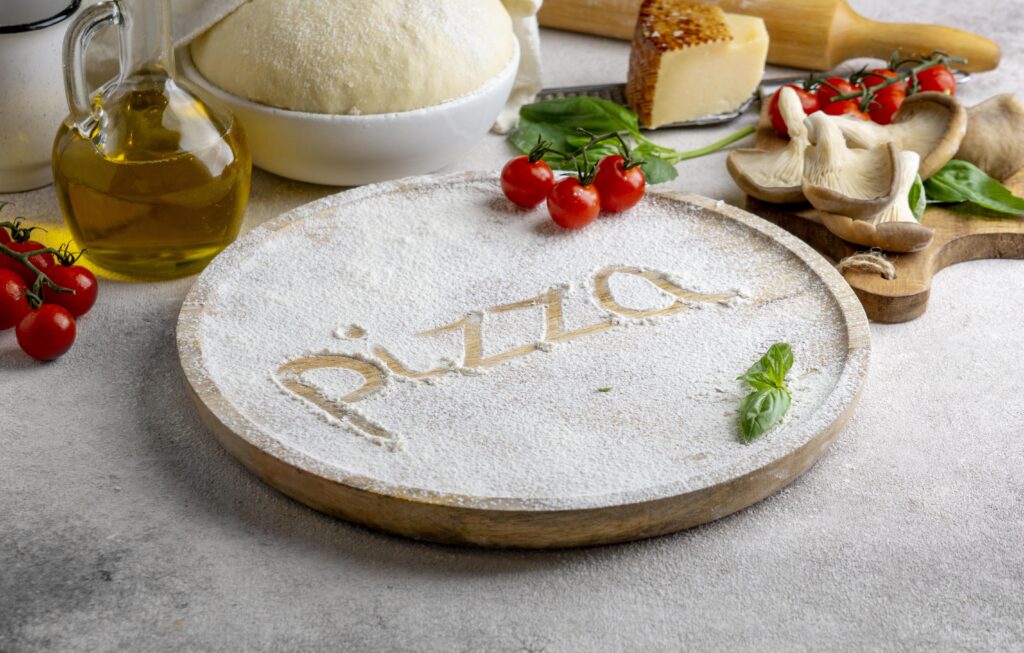Creating the perfect pizza dough isn’t just about flavor—it’s about performance. For professionals in the food industry, especially those in high-demand environments like pizzerias, fine-dining restaurants, or baking production facilities, the dough must behave as reliably as it tastes. One critical factor that determines workability is how easily the dough stretches without tearing. Let’s explore what actually makes a pizza dough extensible, elastic, and resistant to tearing during shaping.

Understanding the Stretch Factor
A well-made pizza dough should offer the right balance between extensibility (how far it can stretch) and elasticity (its ability to spring back). If the dough tears easily, it means the gluten network hasn’t developed properly or the hydration and fermentation processes were off. This can slow down operations and lead to inconsistent results in the final product.
Key Factors That Influence Dough Stretchability
Professionals understand that achieving optimal dough characteristics begins with understanding the science behind the ingredients and the process. Here’s what matters most:
1. Protein Content and Gluten Development
- Protein-rich flour is crucial for strong gluten formation. The gluten network gives dough its structure and stretch.
- Using a flour with a balanced protein level allows dough to be extensible without snapping back or tearing during stretching.
- Over-mixing or under-mixing the dough can disrupt gluten formation. Both will compromise stretchability.
Tip: Ensure proper mixing time and allow enough resting period to let the gluten relax before shaping.
2. Hydration Level
- Water content plays a major role in softening the gluten network.
- A dough with adequate hydration (often between 60-70%) is more pliable and easier to stretch.
- However, too much hydration without proper gluten development can lead to a sticky and fragile dough.
Tip: Adjust hydration levels based on flour absorption capacity and humidity in your environment.
3. The Role of 00 Pizza Flour
Among the flours available for professional use, 00 Pizza Flour stands out for its fine milling, optimal protein range, and superior dough behavior. Its soft texture doesn’t mean weak performance—in fact, it’s the opposite.
- Its fine grind allows for a smoother dough texture.
- Supports gentle gluten formation, which aids in both extensibility and elasticity.
- Works well in high-temperature ovens, which is ideal for professional settings.
This flour’s formulation is tailored for producing dough that’s light, strong, and stretches with ease, making it a reliable choice in professional settings where consistency and speed matter.
4. Proper Fermentation Time
- Fermentation impacts both flavor and structure.
- Slow, cold fermentation (12–72 hours) enhances gluten structure and allows for relaxed dough.
- Under-fermented dough tends to shrink or tear, while over-fermented dough loses strength.
Tip: Use controlled refrigeration and monitor fermentation times closely to match your workflow.
5. Dough Ball Resting Period (Bench Rest)
- After dividing the bulk dough into balls, resting them is critical.
- This rest allows the gluten to relax, reducing resistance when stretching.
- Typically, a 1–2 hour rest at room temperature works best in production environments.
Tip: Use airtight containers or cover the dough balls properly to avoid skin formation.
6. Gentle Handling During Stretching
Even the best-prepared dough can fail under poor handling. Here’s what professionals ensure during the shaping phase:
- Avoid using rolling pins, which destroy air pockets and stress the gluten.
- Use fingertips to press and stretch gradually.
- Allow gravity to assist by holding the dough vertically for final shaping.
Tip: Train the kitchen crew to handle dough with care and consistency.
Best Practices to Improve Dough Performance
To maintain a streamlined kitchen and a product that customers return for, professionals follow these best practices:
- Weigh ingredients with precision. Consistency starts with accuracy.
- Control fermentation with cold storage. This improves predictability.
- Use high-quality flour like 00 Pizza Flour that is engineered for high-heat, high-volume environments.
- Regularly test batches. Adjust based on season, humidity, and water absorption.
Common Mistakes That Affect Stretching
While skilled chefs avoid them, it’s helpful to know the red flags to look out for:
- Overworking the dough during mixing or shaping
- Using weak or low-protein flour unsuited for pizza applications
- Inadequate dough resting or fermentation
- Excessive flour dusting, which dries the surface and leads to tearing
Addressing these early ensures smooth production and reduces product waste.
Why Dough Texture Matters in Professional Baking
In a fast-paced environment, stretchability isn’t just about ease; it’s about efficiency. Dough that tears means time lost, ingredients wasted, and inconsistent results. For larger operations or fine-dining kitchens, such inconsistencies are unacceptable.
Flour choice plays a central role here. Professionals who use 00 Pizza Flour often note improved dough behavior, particularly during high-stress shaping and baking. Its fine texture and specific protein ratio support a smooth, extensible dough that doesn’t fight back or split under pressure.
Final Thoughts: Choose Ingredients That Perform
What makes a pizza dough easy to stretch without tearing? It’s the combined result of ingredient quality, dough technique, fermentation control, and handling methods. For chefs and professional bakers, consistency is non-negotiable, and that starts with the right flour and method.
Choosing 00 pizza flour as a base provides a reliable foundation. Combined with industry best practices, this ensures that your dough isn’t just functional; it’s exceptional.





